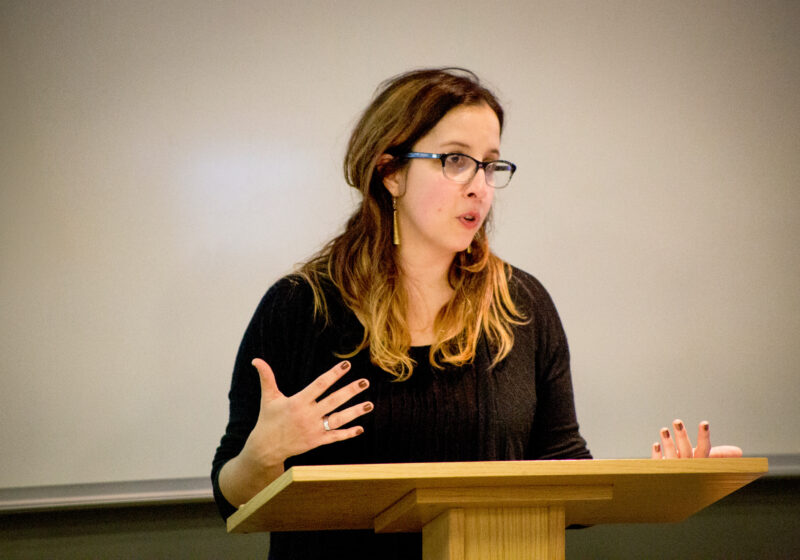Maurice Clarett was dazzling during his first year in college football. He led The Ohio State University to an undefeated 14-0 season and the school’s first national championship in 34 years. Every draft expert could see that Clarett was destined to become the next great lottery pick in the National Football League draft. Clarett wanted to declare for the 2003 NFL draft following his stellar freshman season.However, the NFL has a rule that allows athletes to declare for the draft only after they have been three years removed from high school. The purpose of this rule is four-fold. First, the league wants to protect younger, less physically and mentally mature players from entering the league too early. Second, the rule protects club members who might suffer financially from younger players’ peculiar propensity and susceptibility to injury. Third, the league wants to protect itself from those injuries, because player injuries affect the quality of the product the NFL is able to put out. Finally, the NFL asserts an interest in protecting young high school and college athletes who declare for the draft by remaining undrafted, as these athletes are ineligible to play college football by virtue of having declared for the draft. Clarett successfully challenged the NFL’s interdictive rule in court. On Friday, Judge Scheidlein opined for the Southern District of New York. In her opinion, she ruled that the NFL’s rule constituted “an unreasonable restraint of trade,” violative of the Sherman Antitrust Act and the Clayton Act. Quoting Justice Learned Hand, Scheidlein asserted that an employer cannot implement a contract or agreement that forbids someone from practicing his craft, and the NFL’s rule is odious to that end.The judgment of the court is misguided. The decision has the effect of invalidating a rule that has been upheld by arm’s-length negotiations between the NFL’s managing association and the NFL Player’s Association. In 1993, the interdictory rule was agreed upon and included in the collective bargaining agreement between the league’s managers and players. Hence the court should have exercised restraint in this case, as courts have been extremely reluctant to second-guess policies instituted through the collective bargaining efforts of employers and unions. The court was also amiss to treat the NFL as a de facto monopoly. While the NFL is clearly the premier professional sports association in North America, Clarett was not impermissibly burdened by the rule excluding his eligibility for the draft. Other options were available to him. Clarice could have waited the extra year for eligibility and played another season with OSU. He could have played a year in the Canadian Football League, Arena League Football, or the Arena Football League II. Scheidlein was mistaken to consider only the amount of money Clarett could make in the NFL compared to the amount of money that could be made in other leagues. Indeed, when an employer and its employees enter into an agreement designed to further the interests of both, it is tempting for courts to resist scrutinizing the agreement unless the accord runs afoul of federal legislation designed to promote labor-management fairness or marketplace vitality. However, it is difficult to see the nexus the court draws between the interdictive rule and the alleged anticompetitive behavior the rule is asserted to effect. Scheidlein simply states that the rule stunts competition without establishing even the fledglings of a line of reasoning. The ruling does not show how the NFL behaves in monopolistic ways toward other leagues by instituting this rule. This rule does not seem to be a prima facie invalid agreement. The best claim Clarett’s counsel offered is that such interdictory rules amount to an impermissibly overbroad “group boycott.” A group boycott is an agreement by corporations not to enter into contract or otherwise associate with a class of people. While at first occasion it would appear an attractive option to invalidate the NFL’s rule by the group boycott logic, analysis reveals the utter absurdity of that argument. The NFL does not solicit other professional football leagues for the purpose of entering agreements with them to not associate or contract young athletes. The NFL does not hold an ongoing policy of hostility toward these athletes, either. The league, by this rule, seeks to actually protect the interests of these players. Group boycotts have a widely-dispersed effect of disparaging a small subgroup based on class-membership. The interdictory rule imposes but a de minimus burden on a group of athletes in order to protect a variety of interests.On Wednesday, the district court rebuffed a request by the NFL to stay the enforcement of the ruling pending the result of an appeal to a higher court. As a result, the NFL must permit Clarett to declare for the 2004 draft, and has extended the declaratory deadline for the class of athletes affected by the decision to March 1. The NFL intends to appeal to the Second Circuit, but it is unlikely that any appeal will be heard before this year’s draft. Counsel for the league believe that they will win their case on the merits in the appellate court.Tipton can be reached at rtipton@campustimes.org.
Israel-Palestine
Conversations that matter: Nora Rubel’s hope of shaping future political discourse on Israel and Palestine
Interpreted by some as an anti-Israel and anti-Zionist series, Rubel emphasized that while the need to support a particular side passionately is understandable, it is crucial to be aware of what you are standing behind by exposing yourself to historical and present knowledge.
conversation
Conversations can’t happen in empty rooms. Join us.
It can be uncomfortable and deeply frustrating to hear people say things about these sensitive topics that feel inaccurate, unacceptable, and sometimes hurtful.
Antisemitism
On the Students’ Association resolution
This SA resolution is simply another way to follow the masses by expressing their dismay for Israel and standing in solidarity with the radical Palestinian people.


